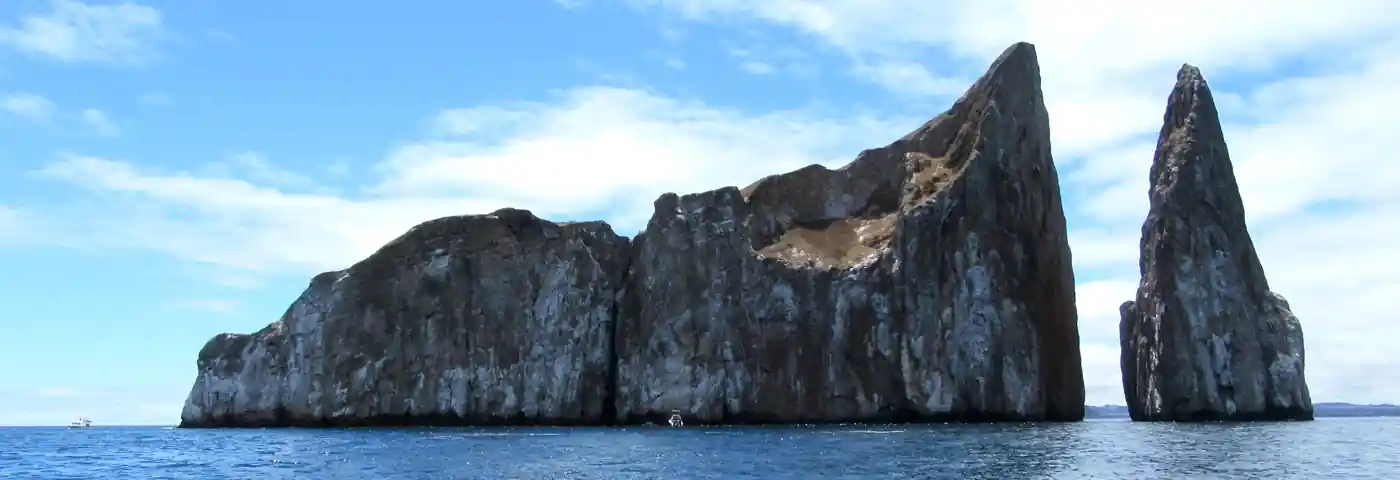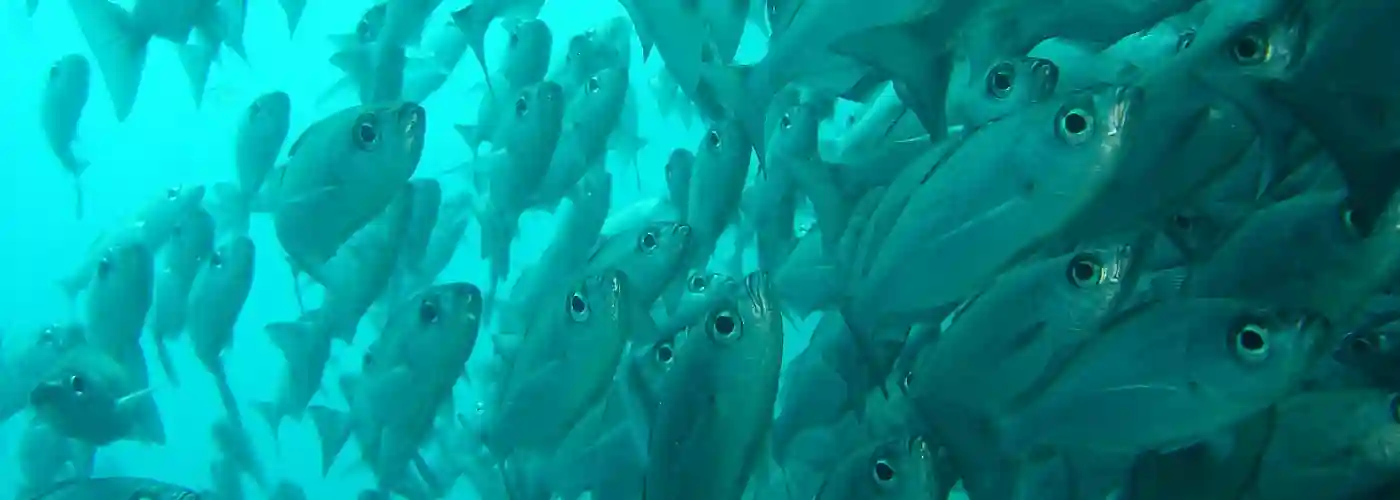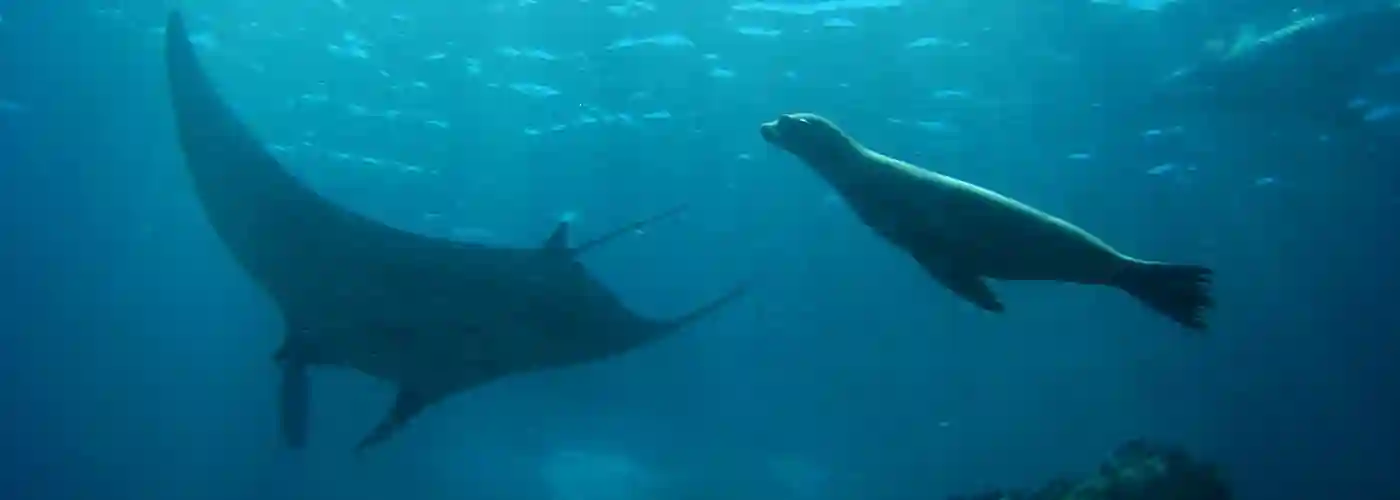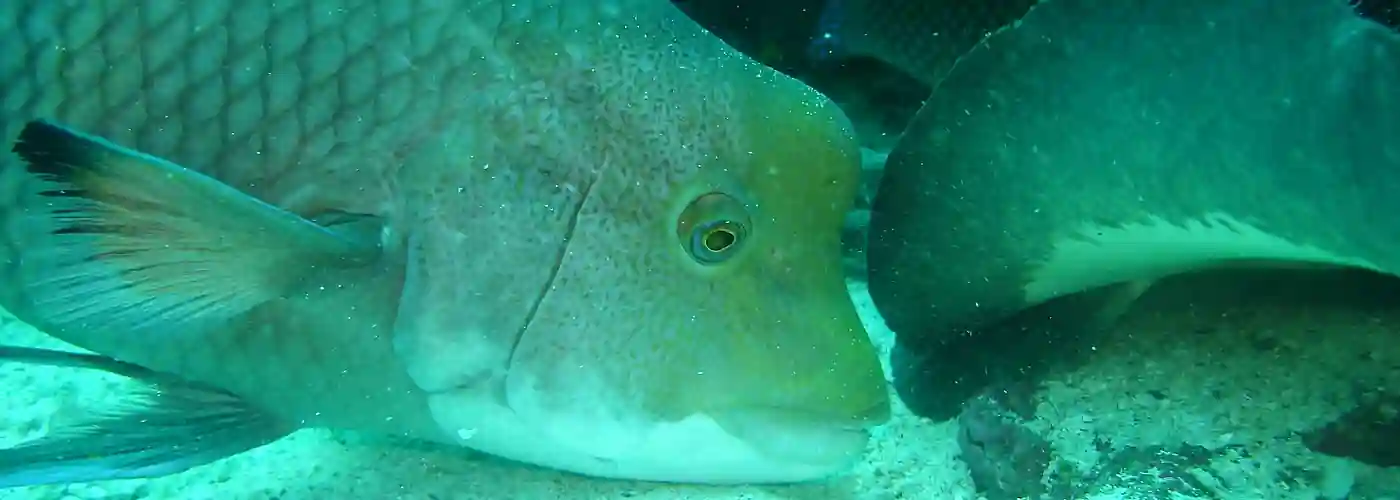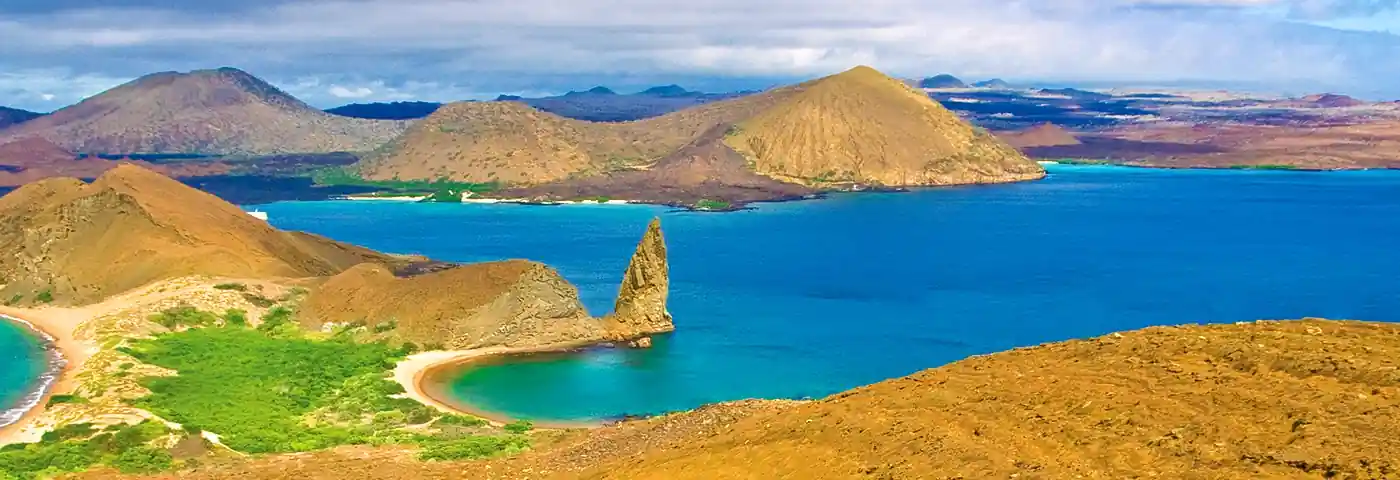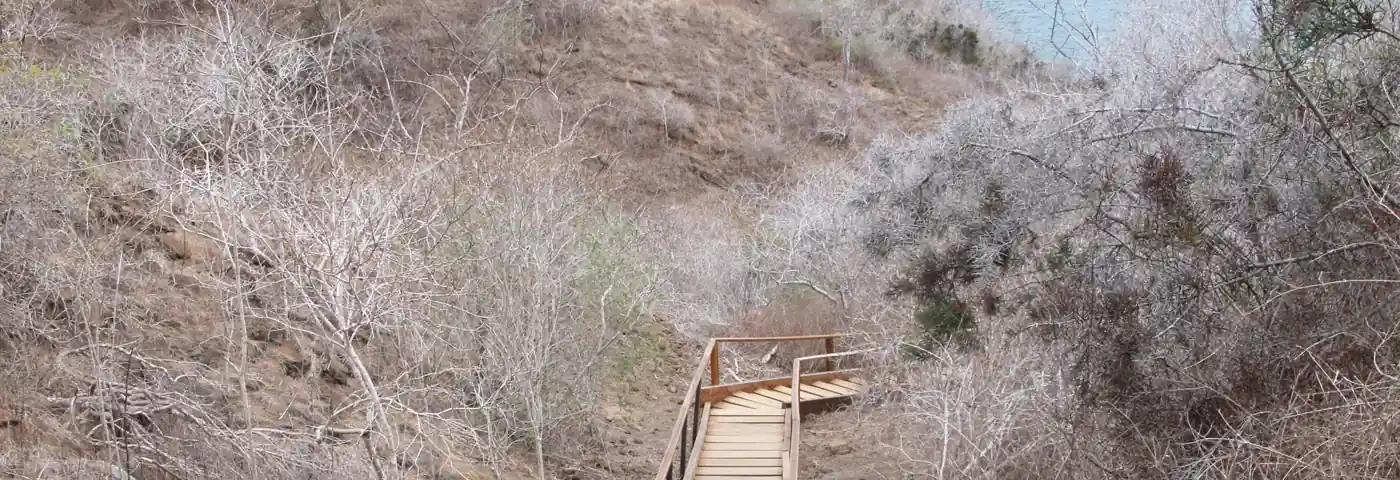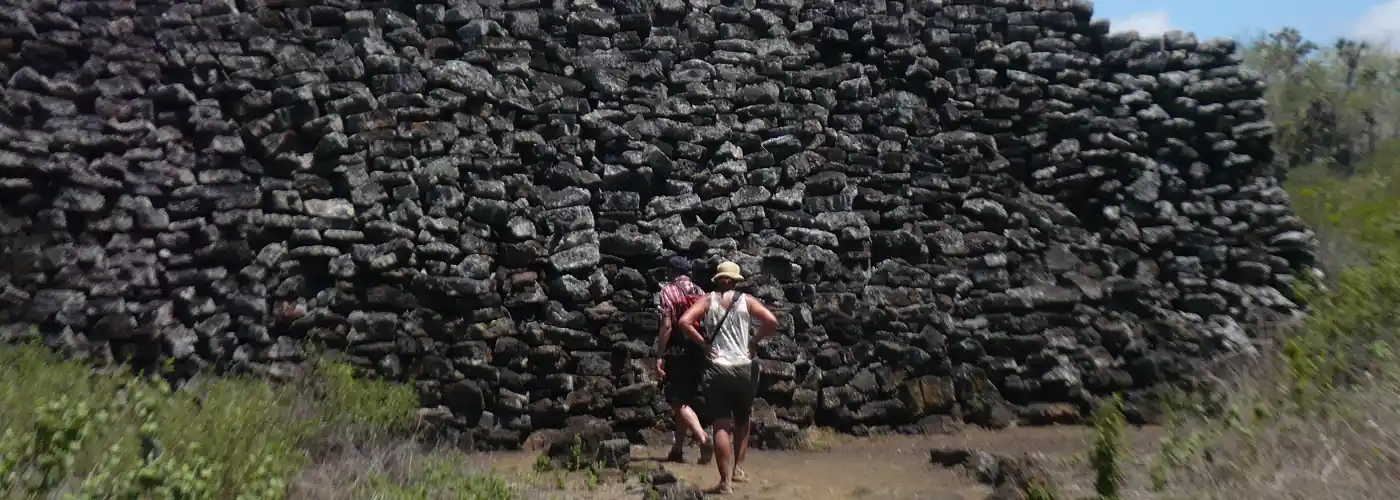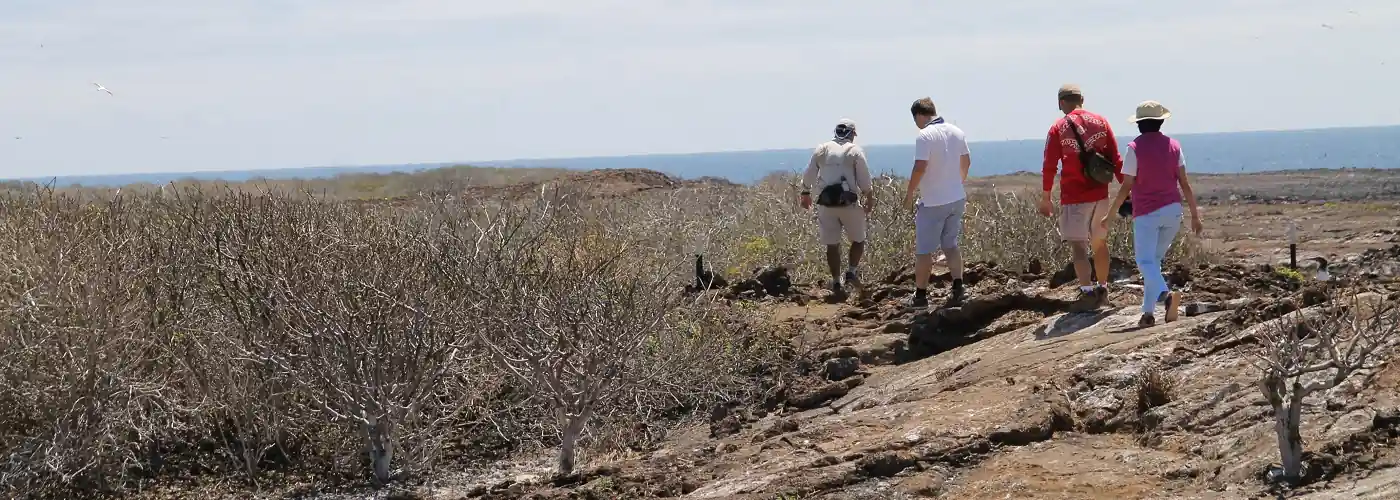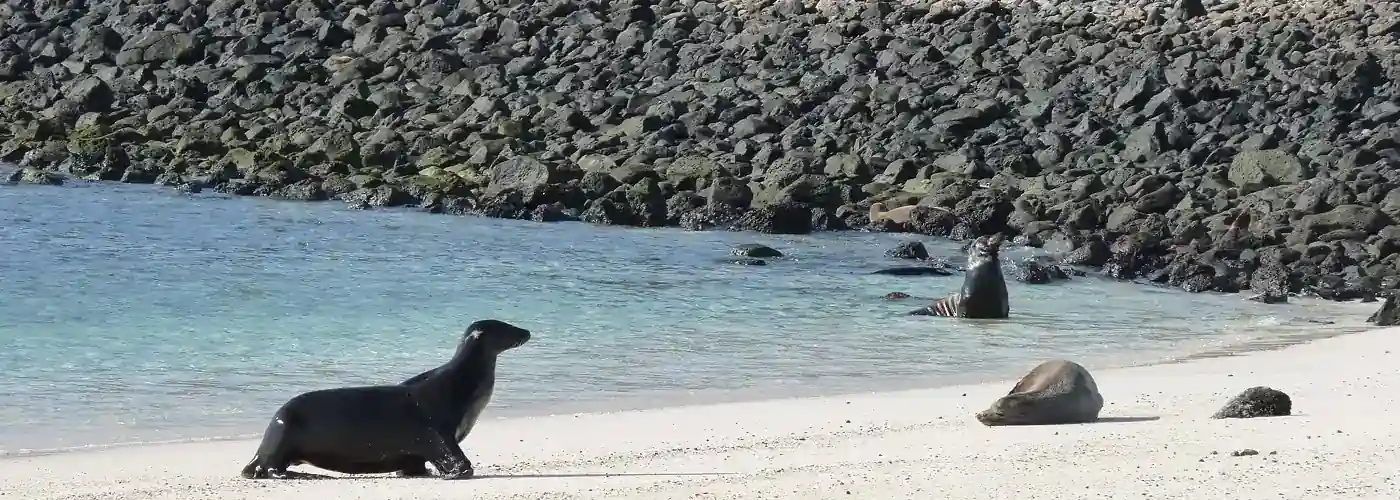8 days sailing catamaran Nemo II – Northern Route
Route A8 Days (Sun - Sun): Northern Galapagos Islands
- 8 days
- 1-14
Highlights of the tour
- Nesting frigate birds
- Coastal lagoon
- Panorama of three volcanoes
- Galapagos giant tortoises in their natural habitat
Overview
Let the sailing and motor catamaran Nemo II take you to the Galapagos Islands. During this exciting 8-day cruise you will get to know the flora and fauna of the northern islands and learn interesting facts about their protection and history.
You’ll take exciting hikes through diverse nature, enjoy spectacular views, and have your naturalist guide explain the islands to you.
Red cliff crabs, boobies, red-billed tropicbirds and giant tortoises are just some of the species you are likely to see.
In addition to the exciting excursions, there is still plenty of time for snorkeling, swimming, or just relaxing.
On the catamaran you can make yourself comfortable in your cabin, on the sun deck or at the bar and have delicious meals.
Itinerary
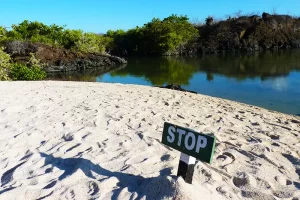
Afternoon – Bachas (Santa Cruz). These two small beaches are located to the west of Turtle Bay on Santa Cruz. Their sand is made of mined coral, which makes it white and soft. This makes it a favourite nesting site for sea turtles. Behind one of the beaches is a smaller water lagoon where you can seasonally spot flamingos or other shorebirds, as well as American Stilt and Rainbows. On the second, wider beach, explore the remains of two abandoned warships. These were abandoned by the US during World War II, when Baltra was used as a strategic base to protect the Panama Canal.
Meals: Lunch / Dinner

Afternoon – Prince Philip’s Steps (also called El Barranco). In the afternoon you will continue sailing to Prince Philip’s Steps, one of the two visitor points on Genovesa Island. Sometimes Galápagos fur seals rest on the rocky ledges. After climbing the steep stone steps, you will take a guided walk where you will see many different birds such as red-footed and blue-footed boobies. The red-footed boobies are almost only seen on Genovesa and nest in the palo santo trees. The bushes on the edge to the ocean side are loosening up, and you can enjoy the incredible view and the ocean breeze. Continuing on, you will pass by a colony of Nazca boobies and eventually reach nests of storm petrels, where, if you are lucky, you can also see the short-eared owl hunting.
Meals: Breakfast / Lunch / Dinner

Afternoon – Rabida. Oxidised iron particles give the stones and sand their rusty colour. A green-fringed lagoon hides behind the beach. This oasis is the most fertile place on the otherwise dry island, which is overgrown with Palo Santo trees. The salty pool is attractive to all kinds of water birds, such as pintail ducks and sometimes American flamingos. Hidden among the evergreen foliage of the surrounding mangrove bushes, many species of songbirds breed. An outstanding attraction is the large breeding colony of brown pelicans, the only species that dive.
Meals: Breakfast / Lunch / Dinner
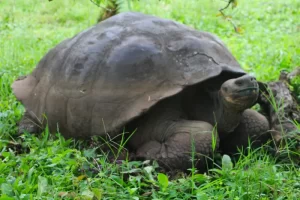
Afternoon – Charles Darwin Station. In the afternoon, you will visit the Charles Darwin Research Station. Here biological research and indispensable conservation of the unique archipelago are carried out. The complex houses the Interpretation and Information Center of the National Park and the Galapagos Marine Reserve. The most unforgettable part of your visit will most likely be the successful hatchery and the encounter with the Galapagos giant tortoises.
Meals: Breakfast / Lunch / Dinner
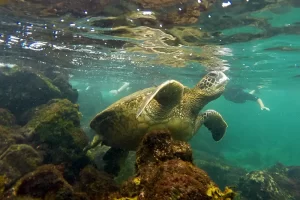
Afternoon – Urbina Bay (Isabela). Urbina Bay is located on the west coast of Isabela, between Elizabeth Bay and Tagus Cove. It is close to the base of the Alcedo volcano. The coastline underwent a major uplift in 1954, extending the shore for one kilometer. Here you will find corals, shells and many other calcareous organisms above water. Urbina Bay is home to the large and colourful land iguanas and giant tortoises of the Vulcan Alcedo population. There are also many Darwin’s finches to spot.
Meals: Breakfast / Lunch / Dinner
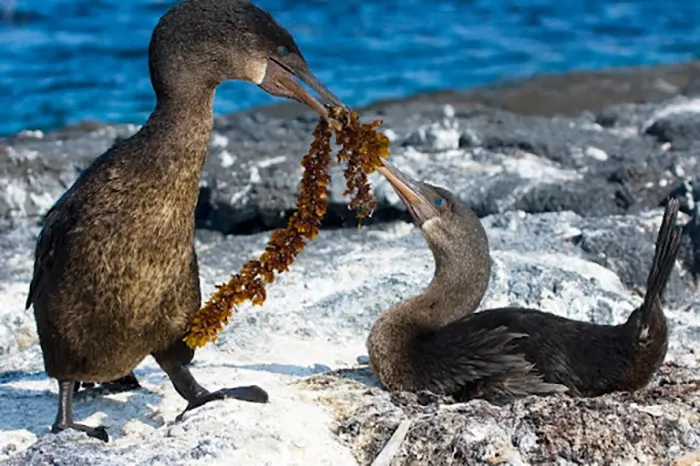
Afternoon – Espinoza Point. In the afternoon, visit Fernandina, the third-largest island in the Galápagos archipelago with only one place open to visitors: Punta Espinoza is located on the northeastern peak of the island. In addition to the marine iguanas and sea lions that hang out here in the sand and water near the coast, the cormorant lives here. It cannot fly, and through the process of evolution has perfected its ability to find food in the sea.
Morning – Tagus Cove. You will navigate around Tagus Cove along the cliffs. From the inflatable boat you have a good chance of seeing the Galápagos penguins, the flightless cormorants and other seabirds. From the pier, it’s about a 30-minute walk to the cliff top, from where you can see Lake Darwin. The lake contains more salt than the sea itself. You can also see some volcanoes from here. Look out for the graffiti on the surrounding cliffs of the bay! They were written by pirates and whalers in the last centuries.
Afternoon – Espinoza Point. In the afternoon, visit Fernandina, the third-largest island in the Galápagos archipelago with only one place open to visitors: Punta Espinoza is located on the northeastern peak of the island. In addition to the marine iguanas and sea lions that hang out here in the sand and water near the coast, the cormorant lives here. It cannot fly, and through the process of evolution has perfected its ability to find food in the sea.
Meals: Breakfast / Lunch / Dinner
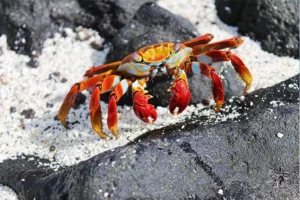
Afternoon – Puerto Egas. At noon you will navigate south to Puerto Egas, which is famous for its fur seal caves, where you will take a special guided walk along the coast. The masterfully sculpted coastline with black basalt and multicolored ash layers form a photogenic scenery with collapsed lava tunnels, natural arches, caves and holes like “Darwin’s toilet”. In a grotto just below a spectacular stone arch at the end of the beach, a colony of sea lions cavorts in the shade. Hundreds of red cliff crabs glow bright orange on the pitch-black stones.
Meals: Breakfast / Lunch / Dinner

After this excursion, you will be transferred to Baltra airport for your return or onward flight.
Meals: Breakfast
- Included services
- Accommodation on board in a cabin with private bathroom
- All meals, water, coffee and tea
- All excursions as indicated in the itinerary (subject to change) with bilingual naturalist guide (English-Spanish)
- Airport transfers in Galapagos (only guaranteed if the flight is booked together with the cruise)
- Snorkeling equipment (mask, fins and snorkel)
- Towels for bathroom and beach
- Not included services
- International flight and Galapagos flight
- Entrance fee to Galapagos National Park (US$ 200 per person, subject to change)
- Transit control card (US$ 20 per person, subject to change)
- Airport transfers in Galapagos (if the flight is not booked together with the cruise)
- Wetsuit
- Soft and alcoholic drinks
- Tips
- Travel insurance and other personal expenses
Hints
Single travelers share a cabin with a person of the same sex, unless a single room is booked and the single supplement is paid (guaranteed single cabin). Single travelers who agree to share their cabin are exempt from the single supplement even if no companion(s) are added.
Single supplement: 80-100%.
Children of all ages are accepted on board, but parents are fully responsible and liable for their children throughout the cruise.
Ask us for children or group discount.
Price not valid for Christmas and New Years´s Eve departures.
All prices are subject to change if local tax increases or other circumstances beyond our control occur.
The itinerary is subject to change at any time due to circumstances beyond our control.
In order to rent a wetsuit, we will need your clothing size (S/M/L/XL) before your arrival in Galapagos. Standard wetsuits with a thickness of 3 mm are rented.
Travel Insurance:
To protect your travel investment, we highly recommend the purchase of travel insurance. Travel insurance is intended to cover medical expenses, trip interruption and cancellation, theft and other losses incurred while traveling domestically or internationally.
Visa and Entry Requirements:
Ecuador requires a valid passport (with a minimum 6 months validity). Contact your local embassy or consulate for the most up-to-date visa requirements.
8 days sailing catamaran Nemo II – Northern Route
Get in touch:

Dayana Arias Leon
- +593 (0)2 2194333
- hello@soleq.travel
Other interesting cruises
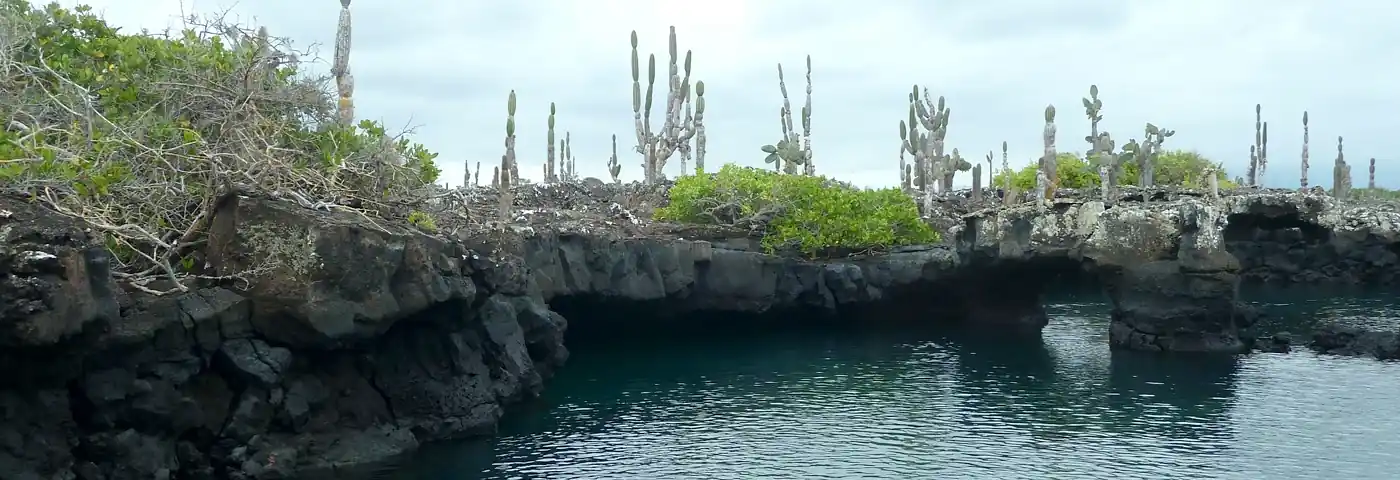

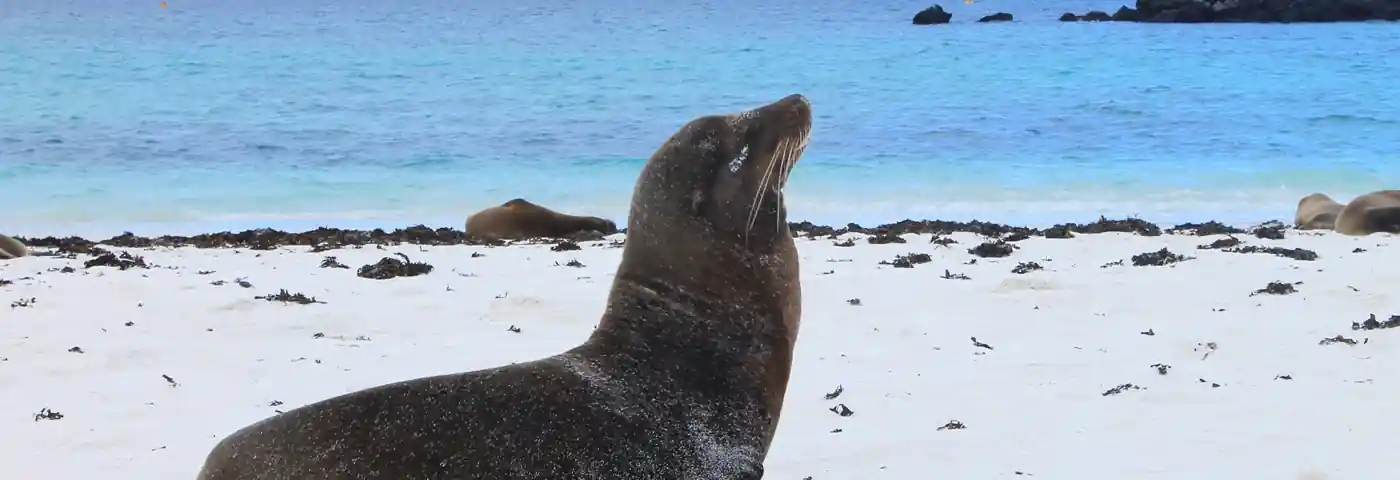


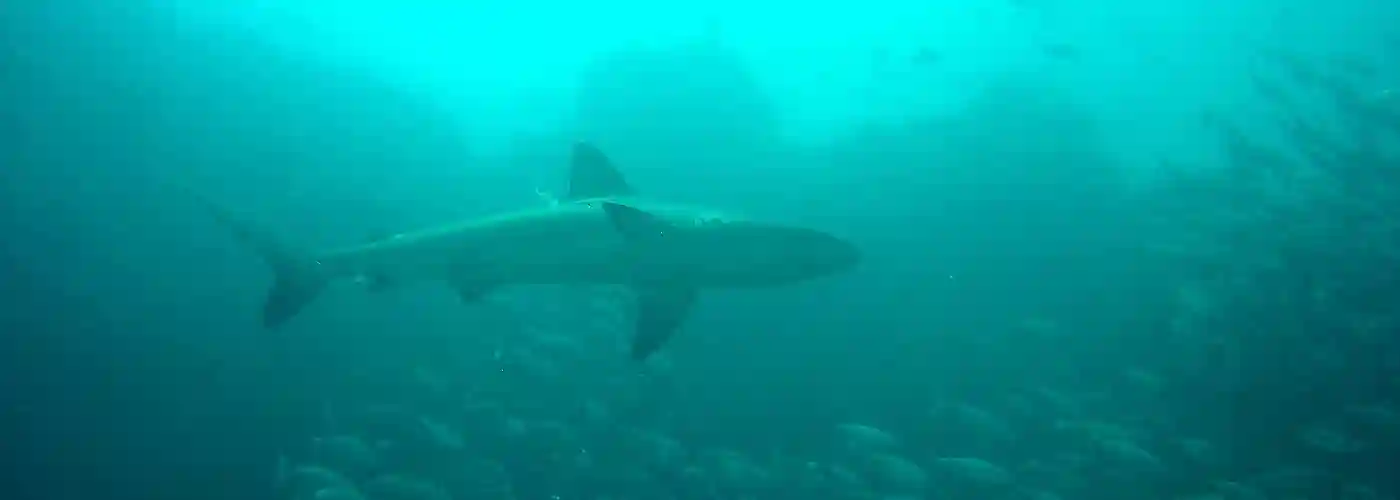
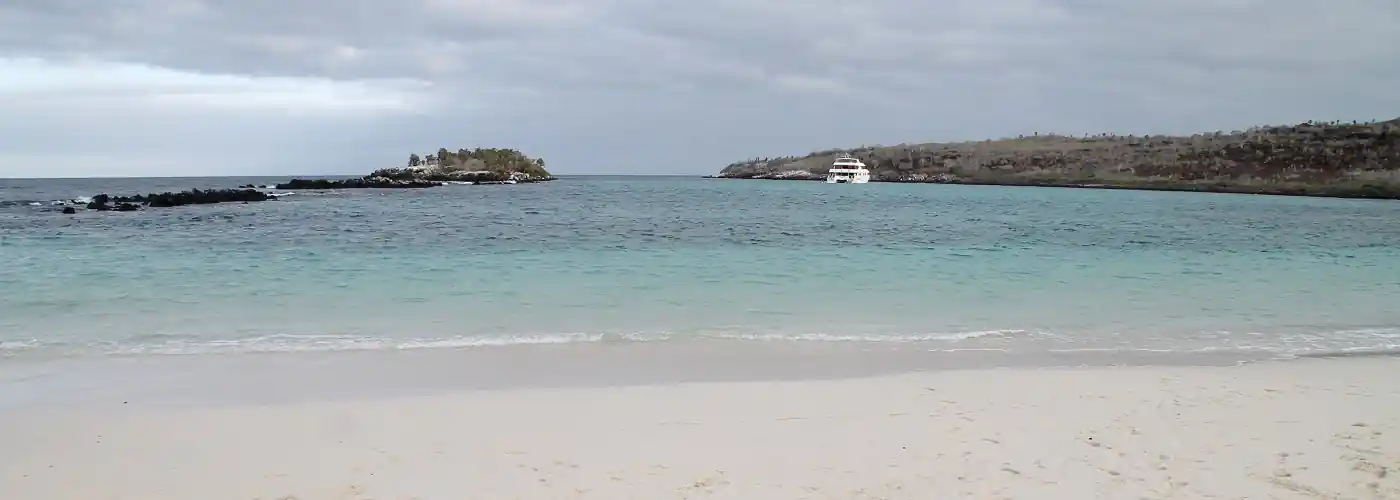
- 8 days
